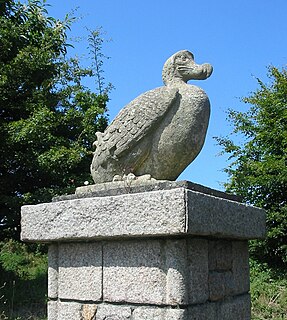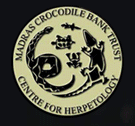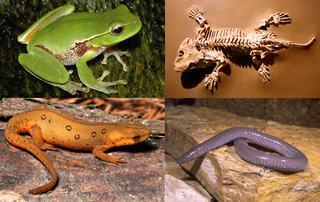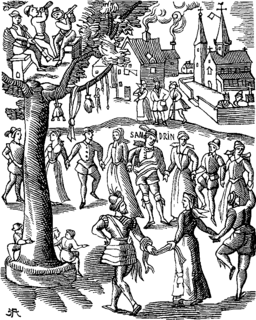Tula Exotarium  |
| Date opened | September 27, 1987 |
|---|
| Land area | 640 m² |
|---|
| No. of animals | 3475 |
|---|
| Memberships | EARAZA |
|---|
| Website | www.tulazoo.ru |
|---|
Tula Regional Exotarium is the State organization of culture of the Tula Region, the Basic Laboratory of the Zoological Institute of the Russian Academy of Sciences, it is a cultural, educational, scientific and conservation center.

The Russian Academy of Sciences consists of the national academy of Russia; a network of scientific research institutes from across the Russian Federation; and additional scientific and social units such as libraries, publishing units, and hospitals.

Education is the process of facilitating learning, or the acquisition of knowledge, skills, values, beliefs, and habits. Educational methods include storytelling, discussion, teaching, training, and directed research. Education frequently takes place under the guidance of educators, however learners may also educate themselves. Education can take place in formal or informal settings and any experience that has a formative effect on the way one thinks, feels, or acts may be considered educational. The methodology of teaching is called pedagogy.

Conservation is an ethic of resource use, allocation, and protection. Its primary focus is upon maintaining the health of the natural world, its fisheries, habitats, and biological diversity. Secondary focus is on material conservation, including non-renewable resources such as metals, minerals and fossil fuels, and energy conservation, which is important to protect the natural world. Those who follow the conservation ethic and, especially, those who advocate or work toward conservation goals are termed conservationists.
The Exotarium was opened on September 27, 1987, and now has the largest collection of snakes in the world, with more than 524 species and subspecies. According to the total number of animals, Tula Exotarium occupies the second place among the Zoos of Russia EARAZA.

Snakes are elongated, legless, carnivorous reptiles of the suborder Serpentes. Like all other squamates, snakes are ectothermic, amniote vertebrates covered in overlapping scales. Many species of snakes have skulls with several more joints than their lizard ancestors, enabling them to swallow prey much larger than their heads with their highly mobile jaws. To accommodate their narrow bodies, snakes' paired organs appear one in front of the other instead of side by side, and most have only one functional lung. Some species retain a pelvic girdle with a pair of vestigial claws on either side of the cloaca. Lizards have evolved elongate bodies without limbs or with greatly reduced limbs about twenty-five times independently via convergent evolution, leading to many lineages of legless lizards. Legless lizards resemble snakes, but several common groups of legless lizards have eyelids and external ears, which snakes lack, although this rule is not universal.
In biology, a species is the basic unit of classification and a taxonomic rank of an organism, as well as a unit of biodiversity. A species is often defined as the largest group of organisms in which any two individuals of the appropriate sexes or mating types can produce fertile offspring, typically by sexual reproduction. Other ways of defining species include their karyotype, DNA sequence, morphology, behaviour or ecological niche. In addition, paleontologists use the concept of the chronospecies since fossil reproduction cannot be examined. While these definitions may seem adequate, when looked at more closely they represent problematic species concepts. For example, the boundaries between closely related species become unclear with hybridisation, in a species complex of hundreds of similar microspecies, and in a ring species. Also, among organisms that reproduce only asexually, the concept of a reproductive species breaks down, and each clone is potentially a microspecies.

In biological classification, the term subspecies refers to one of two or more populations of a species living in different subdivisions of the species' range and varying from one another by morphological characteristics. A single subspecies cannot be recognized independently: a species is either recognized as having no subspecies at all or at least two, including any that are extinct. The term is abbreviated subsp. in botany and bacteriology, ssp. in zoology. The plural is the same as the singular: subspecies.
Up to 90,000 people visit the Exotarium yearly.

Bristol Zoo is a zoo in the city of Bristol in South West England. The zoo's stated mission is to "[maintain and defend] biodiversity through breeding endangered species, conserving threatened species and habitats and promoting a wider understanding of the natural world".

The corn snake is a North American species of rat snake that subdues its small prey by constriction. It is found throughout the southeastern and central United States. Their docile nature, reluctance to bite, moderate adult size, attractive pattern, and comparatively simple care make them commonly kept pet snakes. Though superficially resembling the venomous copperhead and often killed as a result of this mistaken identity, corn snakes are harmless and beneficial to humans. Corn snakes lack functional venom and help control populations of wild rodent pests that damage crops and spread disease.

Jersey Zoo is a zoological park established in 1959 on the island of Jersey in the English Channel by naturalist and author Gerald Durrell (1925–1995). It is operated by the Durrell Wildlife Conservation Trust. It has approximately 169,000 visitors per year; visitor numbers tend to vary with the tourist trade to Jersey.

The Philadelphia Zoo, located in the Centennial District of Philadelphia, Pennsylvania, on the west bank of the Schuylkill River, was the first true zoo in the United States. Chartered by the Commonwealth of Pennsylvania on March 21, 1859, its opening was delayed by the American Civil War until July 1, 1874. The zoo opened with 1,000 animals and an admission price of 25 cents. For a brief time, the zoo also housed animals brought over from safari on behalf of the Smithsonian Institution, which had not yet built the National Zoo.

Chester Zoo is a zoo at Upton by Chester, in Cheshire, England. Chester Zoo was opened in 1931 by George Mottershead and his family. It is one of the UK's largest zoos at 125 acres (51 ha). The zoo has a total land holding of approximately 400 acres (160 ha).

The Madras Crocodile Bank Trust and Centre for Herpetology (MCBT) is a reptile zoo and herpetology research station, located 40 kilometres (25 mi) south of the city of Chennai, in state of Tamil Nadu, India. The centre is both a registered trust and a recognized zoo under the Wildlife (Protection) Act, 1972 and is India's leading institution for herpeto faunal conservation, research and education. The bank is the first crocodile breeding centre in Asia and comes under the purview of the Central Zoo Authority, Ministry of Environment and Forests, Government of India. It was established with the aim of saving three Indian endangered species of crocodile—the marsh or mugger crocodile, the saltwater crocodile, and the gharial, which at the time of founding of the trust were all nearing extinction.

The Zoo Zürich is a zoo located in Zürich, Switzerland and is considered as one of the best zoos in Europe. Opened in 1929, it accumulated a collection of 2,200 specimens of 300 species by its seventy-fifth year. It is located on (Zürichbergstrasse, on the lower reaches of the Zürichberg in the Fluntern quarter.

David Howells Fleay AM MBE was an Australian naturalist who pioneered the captive breeding of endangered species, and was the first person to breed the platypus in captivity.
The Leningrad Zoo, sometimes called the Saint Petersburg Zoo or Sankt-Peterburgskiy Zoopark, in Saint Petersburg, Russia, is located in Alexander Park in the Petrogradskaya Storona. It was founded by Sofia Gerhardt and Julius Gerhardt in 1865. It has about 2,000 animals from 410 species, including polar bears. It is one of the oldest zoos in Russia, as well as the most northernly.

Avilon Zoo is a 7.5-hectare (19-acre) zoo located in Barrio San Isidro, Rodriguez, Rizal, Philippines. It is operated by the Avilon Wildlife Conservation Foundation, which also operates the Ark Avilon Zoo.
The Fort Worth Zoo is a zoo in Fort Worth, Texas, United States, that was founded in 1909 with one lion, two bear cubs, an alligator, a coyote, a peacock and a few rabbits. The zoo now is home to 7,000 native and exotic animals and has been named as a top zoo in the nation by Family Life magazine, the Los Angeles Times and USA Today, as well as one of the top zoos in the South by Southern Living Reader's Choice Awards.

Live food is living food for carnivorous or omnivorous animals kept in captivity; in other words, small animals such as insects or mice fed to larger carnivorous or omnivorous species kept in either in a zoo or as pet.

A herpetarium is a zoological exhibition space for reptiles and amphibians, most commonly a dedicated area of a larger zoo. A herpetarium which specializes in snakes is an ophidiarium or serpentarium, which are more common as stand-alone entities. Many serpentariums milk snakes for venom for medical and scientific research.

The rhinoceros iguana is a threatened species of lizard in the family Iguanidae that is primarily found on the Caribbean island of Hispaniola, shared by the Republic of Haiti and the Dominican Republic. They vary in length from 60 to 136 centimetres and skin colours range from a steely grey to a dark green and even brown. Their name derives from the bony-plated pseudo-horn or outgrowth which resembles the horn of a rhinoceros on the iguana's snout.

A zoo is a facility in which all animals are housed within enclosures, displayed to the public, and in which they may also breed.

The Saigon Zoo and Botanical Gardens, established in 1865, is Vietnam's largest zoo and botanical garden. Located on Nguyen Binh Khiem Street in District 1, T.P. in Ho Chi Minh City, it is home to over a hundred species of mammals, reptiles and birds, as well as many rare orchids and ornamental plants. Also within the grounds is the Museum of Vietnamese History, housing some 25,000 artifacts of history, culture and ethnography of South Vietnam. The grounds also include a temple to the Hung Kings. Other parts of the zoo are divided into animal and plant conservation areas, an orchid garden, and an amusement park.

Minsk Zoo is located in a southeast part of Minsk near Svislach River.
Clyde Peeling's Reptiland, which opened in 1964, is a zoo located in Allenwood, Pennsylvania and specializes in reptiles and amphibians. The zoo houses mambas, cobras, vipers, pythons and other snakes, as well as alligators, tortoises, lizards, and frogs. Reptiland has been an accredited member of the Association of Zoos and Aquariums (AZA) since 1986.
The Chennai Snake Park, officially the Chennai Snake Park Trust, is a not-for-profit NGO constituted in 1972 by herpetologist Romulus Whitaker and is India's first reptile park. Also known as the Guindy Snake Park, it is located next to the Children's Park in the Guindy National Park campus. Located on the former home of the Madras Crocodile Bank Trust, the park is home to a wide range of snakes such as adders, pythons, vipers, cobras and other reptiles. The park gained statutory recognition as a medium zoo from the Central Zoo Authority in 1995.
The Tehran Zoological Garden, also known as Eram Zoo, is located 4 kilometer on the Tehran - Karaj Expressway in the Eram amusement Park. This zoo covers an area of 5 hectares and was inaugurated in 1992, housing over more than 290 species.































